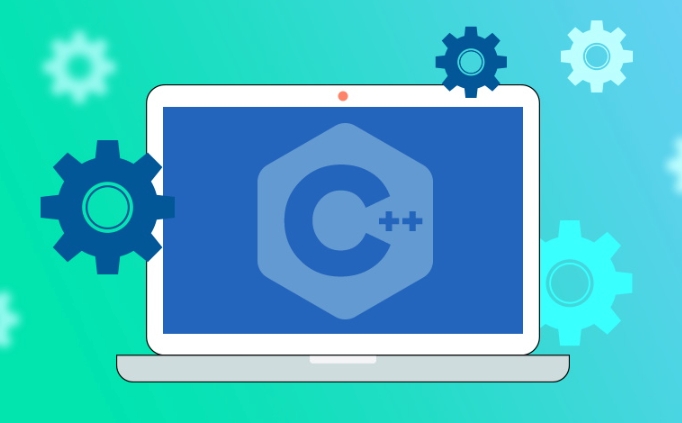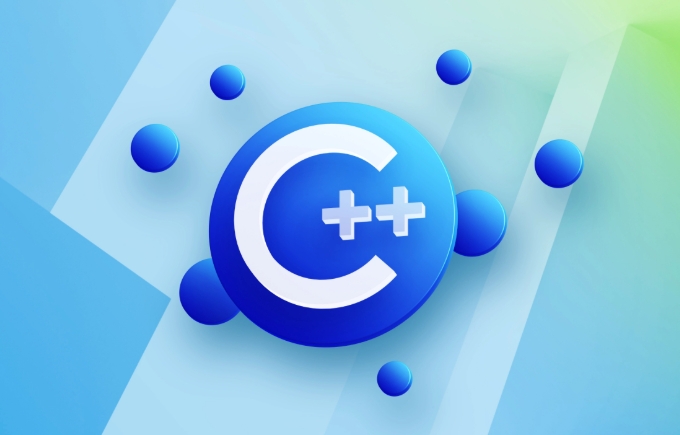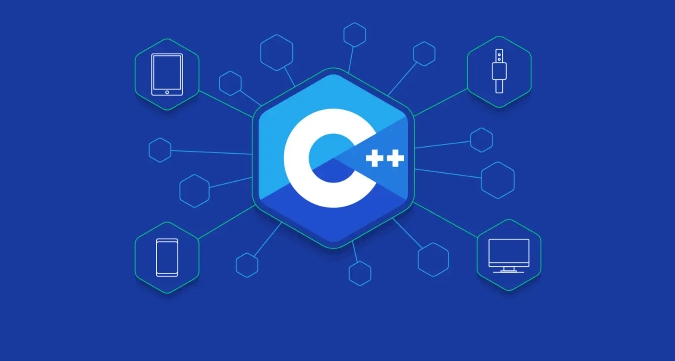C is usually faster than Python, especially in compute-intensive tasks. 1. C is a compiled language that directly runs machine code, while Python executes while interpreting and executing, which brings additional overhead; 2. C determines the type during compilation and manages memory manually, which is conducive to CPU optimization, and Python dynamic typing and garbage collection increase burden; 3. It is recommended to be used for high-performance scenarios such as game engines and embedded systems. Python is suitable for data analysis and rapid development scenarios that prioritize efficiency; 4. It is recommended to use time tools for performance testing, eliminate I/O interference, and average values multiple times to obtain accurate results.

C is usually faster than Python, especially in compute-intensive tasks. The reason is very simple: C is a compiled language that runs directly on the hardware; while Python is an interpreted language that runs in a virtual machine, which has additional overhead. But the specific gap depends on the usage scenario.

1. Compilation vs. Explanation: The fundamental source of performance differences
C will be compiled into machine code before running, and the program can execute instructions directly, with almost no additional burden on the runtime. Python executes while explaining and each run requires parsing code, type checking and other operations, which will bring considerable performance losses.

For example: A simple loop accumulation operation may only take a few milliseconds to complete in C, while a Python script with the same logic may take dozens or even hundreds of milliseconds.
So if the program you write requires a lot of repeated calculations (such as image processing, physical simulation), it would be more appropriate to use C.

2. Impact of type system and memory management
C supports manual memory control, and the variable type is determined at compile time, so that the CPU can better optimize the execution path. Python variables are dynamically typed, and new objects can be created every time they are assigned, and memory must be released by garbage collection mechanisms, which also slows down execution speed.
for example:
- Defining an integer
int a = 5;in C, the space occupied and operation are fixed. - In Python, even
a = 5is actually a complete object behind it, including reference counts, type information, etc., which occupies more memory and makes the operations more complicated.
This kind of "flexibility" comes at a cost, especially in scenarios where large data volumes or high-frequency calls are performed.
3. Selection suggestions in actual development
Although C is fast, not all situations are suitable for it:
-
Recommended use of C :
- Game engines, embedded systems, high-frequency trading and other fields that require extremely high performance
- Needs fine control of memory or hardware resources
- Long life cycle and high operation frequency
-
Recommended Python :
- Scenarios with priority development efficiency such as data analysis, AI modeling, scripting, etc.
- Rapid prototyping, algorithm verification
- Don't involve too many underlying computing tasks
Moreover, many tools (such as Cython or NumPy) can also make Python close to C in key parts, and it does not necessarily have to use C all.
4. Tips for performance testing
If you want to test the difference between the two yourself, there are a few tips:
- Use
timemodule or command line tools (such as time) to record execution time - Avoid introducing I/O operations (such as reading and writing files) in tests, otherwise it will affect the accuracy of comparison
- Multiple runs to average the value to avoid accidental factors
For example, you can write a function that calculates the Fibonacci sequence, which is implemented in C and Python respectively, and then it is time-consuming, and you will find that the gap is quite obvious.
Basically that's it. Both have their own advantages, and choosing the right language can result in twice the result with half the effort.
The above is the detailed content of C vs Python performance. For more information, please follow other related articles on the PHP Chinese website!

Hot AI Tools

Undress AI Tool
Undress images for free

Undresser.AI Undress
AI-powered app for creating realistic nude photos

AI Clothes Remover
Online AI tool for removing clothes from photos.

Clothoff.io
AI clothes remover

Video Face Swap
Swap faces in any video effortlessly with our completely free AI face swap tool!

Hot Article

Hot Tools

Notepad++7.3.1
Easy-to-use and free code editor

SublimeText3 Chinese version
Chinese version, very easy to use

Zend Studio 13.0.1
Powerful PHP integrated development environment

Dreamweaver CS6
Visual web development tools

SublimeText3 Mac version
God-level code editing software (SublimeText3)

Hot Topics
 How to handle API authentication in Python
Jul 13, 2025 am 02:22 AM
How to handle API authentication in Python
Jul 13, 2025 am 02:22 AM
The key to dealing with API authentication is to understand and use the authentication method correctly. 1. APIKey is the simplest authentication method, usually placed in the request header or URL parameters; 2. BasicAuth uses username and password for Base64 encoding transmission, which is suitable for internal systems; 3. OAuth2 needs to obtain the token first through client_id and client_secret, and then bring the BearerToken in the request header; 4. In order to deal with the token expiration, the token management class can be encapsulated and automatically refreshed the token; in short, selecting the appropriate method according to the document and safely storing the key information is the key.
 How to parse large JSON files in Python?
Jul 13, 2025 am 01:46 AM
How to parse large JSON files in Python?
Jul 13, 2025 am 01:46 AM
How to efficiently handle large JSON files in Python? 1. Use the ijson library to stream and avoid memory overflow through item-by-item parsing; 2. If it is in JSONLines format, you can read it line by line and process it with json.loads(); 3. Or split the large file into small pieces and then process it separately. These methods effectively solve the memory limitation problem and are suitable for different scenarios.
 Python for loop over a tuple
Jul 13, 2025 am 02:55 AM
Python for loop over a tuple
Jul 13, 2025 am 02:55 AM
In Python, the method of traversing tuples with for loops includes directly iterating over elements, getting indexes and elements at the same time, and processing nested tuples. 1. Use the for loop directly to access each element in sequence without managing the index; 2. Use enumerate() to get the index and value at the same time. The default index is 0, and the start parameter can also be specified; 3. Nested tuples can be unpacked in the loop, but it is necessary to ensure that the subtuple structure is consistent, otherwise an unpacking error will be raised; in addition, the tuple is immutable and the content cannot be modified in the loop. Unwanted values can be ignored by \_. It is recommended to check whether the tuple is empty before traversing to avoid errors.
 How to generate a UUID/GUID in C ?
Jul 13, 2025 am 02:35 AM
How to generate a UUID/GUID in C ?
Jul 13, 2025 am 02:35 AM
There are three effective ways to generate UUIDs or GUIDs in C: 1. Use the Boost library, which provides multi-version support and is simple to interface; 2. Manually generate Version4UUIDs suitable for simple needs; 3. Use platform-specific APIs (such as Windows' CoCreateGuid), without third-party dependencies. Boost is suitable for most modern projects, manual implementation is suitable for lightweight scenarios, and platform API is suitable for enterprise environments.
 How to prevent a method from being overridden in Python?
Jul 13, 2025 am 02:56 AM
How to prevent a method from being overridden in Python?
Jul 13, 2025 am 02:56 AM
In Python, although there is no built-in final keyword, it can simulate unsurpassable methods through name rewriting, runtime exceptions, decorators, etc. 1. Use double underscore prefix to trigger name rewriting, making it difficult for subclasses to overwrite methods; 2. judge the caller type in the method and throw an exception to prevent subclass redefinition; 3. Use a custom decorator to mark the method as final, and check it in combination with metaclass or class decorator; 4. The behavior can be encapsulated as property attributes to reduce the possibility of being modified. These methods provide varying degrees of protection, but none of them completely restrict the coverage behavior.
 what is if else in python
Jul 13, 2025 am 02:48 AM
what is if else in python
Jul 13, 2025 am 02:48 AM
ifelse is the infrastructure used in Python for conditional judgment, and different code blocks are executed through the authenticity of the condition. It supports the use of elif to add branches when multi-condition judgment, and indentation is the syntax key; if num=15, the program outputs "this number is greater than 10"; if the assignment logic is required, ternary operators such as status="adult"ifage>=18else"minor" can be used. 1. Ifelse selects the execution path according to the true or false conditions; 2. Elif can add multiple condition branches; 3. Indentation determines the code's ownership, errors will lead to exceptions; 4. The ternary operator is suitable for simple assignment scenarios.
 How to make asynchronous API calls in Python
Jul 13, 2025 am 02:01 AM
How to make asynchronous API calls in Python
Jul 13, 2025 am 02:01 AM
Python implements asynchronous API calls with async/await with aiohttp. Use async to define coroutine functions and execute them through asyncio.run driver, for example: asyncdeffetch_data(): awaitasyncio.sleep(1); initiate asynchronous HTTP requests through aiohttp, and use asyncwith to create ClientSession and await response result; use asyncio.gather to package the task list; precautions include: avoiding blocking operations, not mixing synchronization code, and Jupyter needs to handle event loops specially. Master eventl
![What is [[nodiscard]] attribute in C ?](https://img.php.cn/upload/article/001/431/639/175242944152712.jpg?x-oss-process=image/resize,m_fill,h_207,w_330) What is [[nodiscard]] attribute in C ?
Jul 14, 2025 am 01:57 AM
What is [[nodiscard]] attribute in C ?
Jul 14, 2025 am 01:57 AM
[[nodiscard]] is a property introduced in C 17 to prompt the compiler to warn the situation where the function returns value is ignored. 1. Commonly used functions to return error codes, states or resource handles; 2. Can act on function declarations, return types, enums or classes; 3. Use (void) to explicitly ignore the return value; 4. Mainstream compilers support but do not forcefully block compilation; 5. It is recommended to use key return values to affect program logic to avoid abuse.






